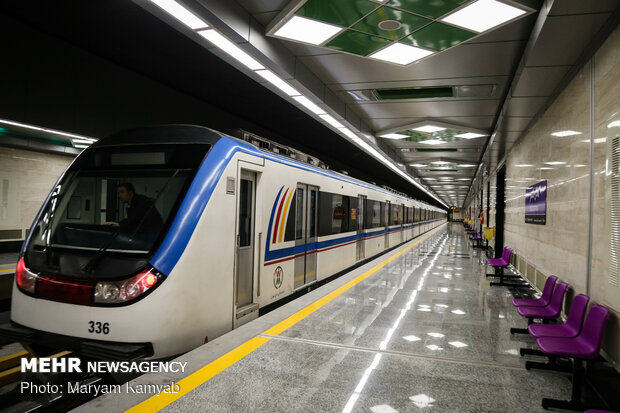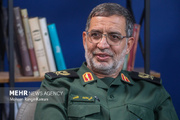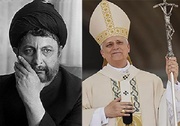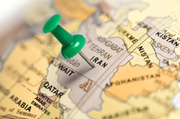As a zero-emission transit, the subway serves as a convenient means of transportation, probably the most favored public transportation by both Iranians and international visitors.
Tehran
The capital city pioneers other metropolises in subway network development. The metro system is the fastest, easiest and most efficient kind of transportation in Tehran, which helps escape the city’s famous traffic congestions.
Tehran’s subway network, currently, stretches over 220 kilometers and includes seven lines (1 to 7) with 120 stations. Line 6 and 7 are still under construction.
The operating lines connect north to south and west to east of the city and all across the city center, majorly missing the corners.
Based on an initiative to provide Tehran’s residents and tourists with extensive and decent transportation services, four new lines have been designed for expanding the city’s subway network.
The new lines (8 to 11) have been designed to cover the areas not covered so far.
All the four new lines will have numerous intersections with the already operating lines, to make it easy to reach the historical places and bazaars.
The new railway transportation map also includes four Light Rail Transit lines that mostly cover the central parts of the city and are set to accompany the subway system to ease traffic congestion and crowd concentration in the area.
Mashhad
The holy city of Mashhad in northeastern Khorasan Razavi province is Iran’s main attraction for religious tourism drawing close to 25 million people from inside and outside the country every year.
Given the role and significance of the city, the municipality has done a good job in helping the visiting devotees, tourists and residents. Mashhad, with 3.5 million people, has a decent subway and BRT system.
The subway project in the megacity is progressing rapidly.
The subway has become popular among the Iranian and foreign pilgrims and tourists since inception less than a decade ago, while it continues to expand.
From Mashhad International Airport (known as Shahid Hasheminejad Airport) on the city's southwestern parts, people take the metro to get to the city center and to the northwest areas.
Trains run from 6 am and 10 pm. On Fridays, services are available between 7 in the morning and 10 p.m. The trains’ headway is 4 to 6 minutes.
Malek Abad Garden Museum is accessible through Khayyam Station in Line 1. Covering 300 hectares of area, the museum is one of the most popular attractions of the city.
The subway makes its way through Koohestan Park-e-Shadi Complex that is home to a zoo plus the famous Vakilabad Garden. Covering a 70-hectare area, the garden is one of the biggest in Iran.
Through Rah-Ahan (railway in Persian) Station, Line 2 gives direct access to Mashhad Railway Station, a transport corridor to regions across the country.
Line 2 also links makes it easy for the tourists to reach another historical site, Gonbad-e-Sabz (green dome in Persian), which is the mausoleum of Sheikh Momen Astarabadi a prominent Muslim theologian. The mausoleum dates back to the Safavid Era (1501-1722).
Tabriz
Tabriz Metro is planned to stretch 100 kilometers throughout the city with 70 stations, with five lines, including four urban and one intercity lines.
Line 1 starts from the famous tourist site of El Goli Square in the southeast of Tabriz, and travels 17.2 kilometers to the west with 18 stations and reaches Laleh Street, a historical neighborhood in the city’s southwest.
Starting from west in Qaramalik Neighborhood, Line 2 is to reach an exhibition center in the east of Tabriz after crossing 22.4 kilometers and 20 stations.
Line 3, which is to extend 15 kilometers from Tabriz International Airport in the northwest to Tabriz Central Bus Terminal in the south, will have 14 stations.
The intercity tramway Line 5 will connect the southwestern tail of Line 1 to Sahand City in Osku County. The line will be about 30 kilometers long, running toward its destination with no stations along the way.
Isfahan
The city of Isfahan, central Iran, is also among metropolises replete with historical spots and tourist destinations, which can be accessed through the subway.
Isfahan's subway map includes a total of three lines (1, 2 and 3), of which only one (Line 1) is currently operational. The stations are designed in a way to ease access to the multitude of historical and tourist destinations.
The 20-kilometer Line 1 links the north to the south of the city with 20 stations. With a multi-phase construction process, the line became fully operational in 2017.
Isfahan’s Line 2 consists of 22 stations, stretches 24.4 kilometers from Khomeini-Shahr in the west to Zeinabiyeh, a famous area with an old traditional bazaar in the northeast.
Imam Hossein and Azadi stations on the line respectively intersect with Line 2 and 3, which are still under construction.
Line 3, which is the shortest, covers the southwestern part of the city, with seven stations along an 8.8-kilometer tunnel.
Qom
The subway network of Qom, Iran's second holy shrine city, is expected to become operational this year. The construction work has been on track to develop the city’s subway infrastructures to ease the transport of the passenger, who are mainly the religious tourists from inside and outside of the country.
Provincial officials say accelerating the construction of subway is essential for the shrine city, as the increasing urban development, aging public transportation fleet and substandard vehicles plying the streets are worsening its air pollution.


























Your Comment